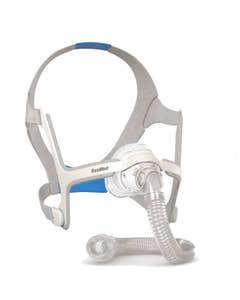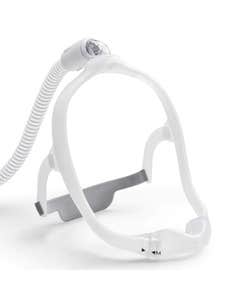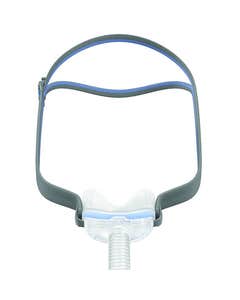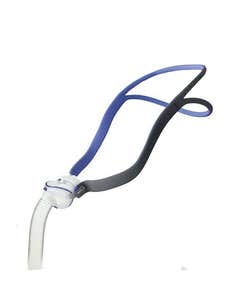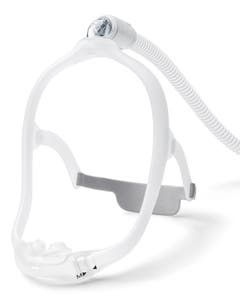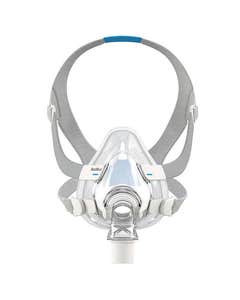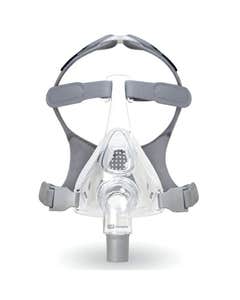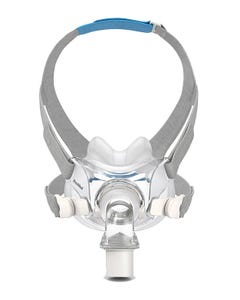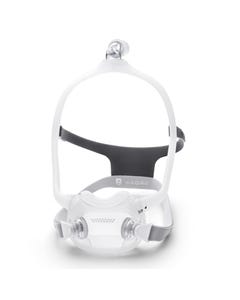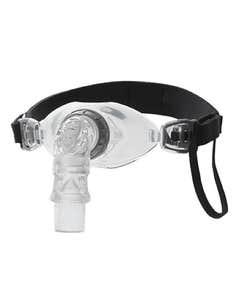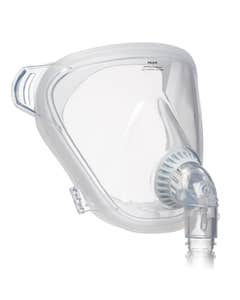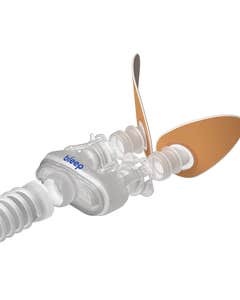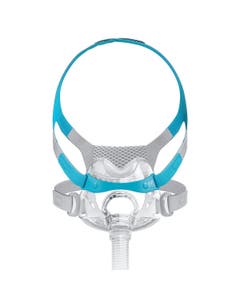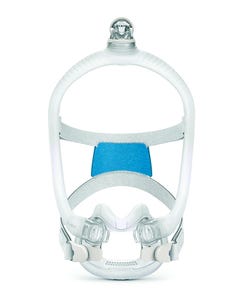CPAP Mask Types Explained: Nasal, Pillows, Full Face, Hybrid & More
Understanding CPAP Mask Types: Finding Your Best Fit for Sleep Apnea Therapy
Choosing the right CPAP mask is one of the most critical steps towards successful sleep apnea treatment. Your mask is the crucial interface that delivers pressurized air from your CPAP machine to keep your airway open, allowing you to breathe consistently and sleep soundly. With several different types available, understanding the unique designs, benefits, and drawbacks of each can help you find the perfect match for your comfort, breathing style, and therapy needs.
This guide will explain the main types of CPAP masks - Nasal, Nasal Pillow, Full Face, and Hybrid – as well as other less common variations, helping you make an informed decision for better sleep.
Nasal CPAP Masks: Covering the Nose
A Nasal Mask is a type of CPAP mask that creates a seal around or under your nose, delivering air pressure only through the nasal passages. These are a popular choice for many users.
How They Work
Most traditional nasal masks feature a triangular cushion that rests over the nose, from the bridge down to the upper lip, like the classic ResMed AirFit N20. Newer "under-the-nose" nasal cradle styles, such as the Philips DreamWear Nasal Mask or ResMed AirFit N30, sit just below the nostrils, reducing contact with the nose bridge. Headgear typically secures the frame.
Pros |
Cons |
| Provides a clear field of vision for reading or watching TV | Not ideal for mouth breathers (can lead to air leaks and dry mouth unless used with a chin strap) |
| Less bulky feel compared to full face CPAP masks | Can cause irritation on the bridge of the nose for some users (less so with under-the-nose styles) |
| Effective for a wide range of pressues | May be difficult to seal with significant nasal congestion |
| Work well with side sleepers |
Best Suited For
- Nose breathers
- Side or back sleepers
- Users who prefer less facial coverage than a full face mask
- Those who read/watch TV before sleep
Nasal Pillow CPAP Masks: Minimal Contact
Nasal Pillow Masks utilize small cushions that seal directly at the entrance of the nostrils, offering the most minimal facial contact among common mask types.
How They Work
Two soft "pillows," often made of silicone, insert slightly into the nostrils to deliver air pressure directly. The seal is formed at the nostril opening. Popular examples include the very lightweight ResMed AirFit P10 and the top-of-head tube design ResMed AirFit P30i or Philips DreamWear Silicone Pillow Mask.
Pros |
Cons |
| Extremely lightweight and least obtrusive design | Direct airflow can sometimes cause nasal dryness or irritation for sensitive users |
| Excellent field of vision | May be less stable or comfortable at very high CPAP pressures for some individuals |
| Ideal for users prone to claustrophobia | Requires clear nasal passages; not suitable during heavy congestion |
| Works well with facial hair (mustaches/beards) | Not suitable for mouth breathers unless used with a chin strap |
| Good for active sleepers as they are less likely to be dislodged |
Best Suited For
- Active sleepers
- Side or stomach sleepers
- Users with facial hair
- Those who feel claustrophobic in larger masks, nose breathers
Full Face CPAP Masks: Covering Nose and Mouth
Full Face Masks are designed to cover both the nose and mouth, creating a seal around both. This ensures that therapy air enters the airway regardless of whether you breathe through your nose or mouth.
How They Work
The cushion typically seals from the bridge of the nose down below the lower lip, encompassing both airways, like the well-regarded ResMed AirFit F20 or Fisher & Paykel Simplus. Some newer designs feature more compact cushions that seal under the nose while still covering the mouth, such as the ResMed AirFit F30 or the Philips DreamWear Full Face Mask.
Pros |
Cons |
| The best option for mouth breathers or those with frequent nasal congestion/allergies | Largest and potentially bulkiest mask type (though newer designs are more minimal) |
| Generally very stable and maintain a seal well, even at higher pressures | Can obstruct vision more than other types (less so with under-the-nose styles) |
| Provide effective therapy even if mouth falls open during sleep | May feel more claustrophobic for some users |
| Potential for leaks is higher due to the larger seal area, requiring careful fitting |
Best Suited For
- Mouth breathers
- Users with chronic nasal congestion or blockages
- Those on high CPAP pressure settings
- Back sleepers (though many models like the Fisher & Paykel Evora Full Face accommodate side sleeping too).
Hybrid CPAP Masks & Other Variations
Beyond the main three, other mask designs cater to specific needs:
- Hybrid Masks: These masks combine elements of different types. A common hybrid design seals under the nose with nasal pillows or covers the mouth with an oral cushion (like the concept behind the TAP PAP). This provides the benefit of a traditional CPAP mask with less contact on the nose bridge. Hybrid masks are a good option for users who dislike pressure on the nasal bridge but may breathe through their mouth.
- Oral Masks: These masks only cover the mouth, leaving the nose completely unobstructed, such as the Fisher & Paykel Oracle 452. They are a niche option primarily for users with chronic, severe nasal obstruction.
- Total Face Masks: Covering the entire face, including the eyes (like the Philips Respironics FitLife), these are generally used in specific medical situations or for individuals with facial structures that make sealing other mask types impossible.
- Unique Interfaces: Some designs defy traditional categories, like the Bleep DreamPort, which uses adhesive ports instead of a frame and headgear.
Expert Insights on Choosing Your Mask Type
Leveraging our years of experience helping thousands of CPAP users, here are some extra considerations:
- Mask Type & CPAP Pressure Suitability: Thanks to new innovativation and modern engineering, most styles of CPAP masks can handle a range of pressures. However, full face masks, like the AirFit F30 and F40, are lightweight options that best accommodate high pressures. These masks provide a stable, reliable seal so users experience comfortable treatment. Conversely, nasal pillow masks may not be the most suitable to sustain high pressures as they only provide therapy air through the nostrils.
- Common Misconceptions About Each Mask Type: There are many common myths that The CPAP Shop is able to debunk for our customers. For example, many CPAP patients believe that CPAP masks cause dryness, irritation, and sinus infections, but proper cleaning and maintenance will prevent the risk of any of these side effects. Another myth is that all CPAP masks make users feel claustrophobic, but newer designs like the Fisher & Paykel Evora offer minimal contact to the face for added comfort.
- Tips for Transitioning Between Mask Types: We know getting diagnosed with sleep apnea can feel overwhelming and challenging because of all the new changes it brings to your life. We also acknowledge the challenges of switching between mask styles. While it is common to experience an adjustment period, make sure that whatever mask you are using provides the best therapy possible.
- Innovative Examples: Many new masks have been developed in recent years that address the common complaints users experience when using older mask. Newer models that provide minimal contact and an exceptional seal include the AirFit F30i, AirFit F40, and DreamWear Full.
Finding the Right Type is Key
Understanding the different CPAP mask types is the first step toward finding an interface that works seamlessly with your therapy and lifestyle. Whether you need the minimal contact of nasal pillows, the balanced coverage of a nasal mask, or the security of a full face mask, there's likely a design suited to your needs.
Don't hesitate to explore the specific models within each category on our site (like the popular ResMed AirFit series or the innovative Philips DreamWear line), consult with your sleep specialist or doctor, and utilize resources like our MaskFit AR tool to help narrow down your choices. Finding the right mask type significantly improves comfort, compliance, and the overall effectiveness of your sleep apnea treatment.




